How to uproot a tree stump?
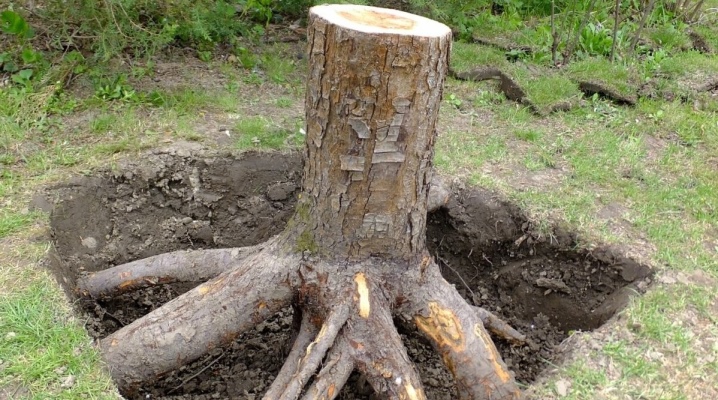
Quite often, at dachas, it is required to carry out such a procedure as uprooting stumps. Felled old trees leave a branched root system, which causes serious inconvenience in plowing the land, building and landscaping. Leaving them unattended is simply dangerous. It is worth learning in more detail about how to uproot a stump, quickly remove it on the site with a winch, tractor, excavator or other devices from the review of all methods available to summer residents.
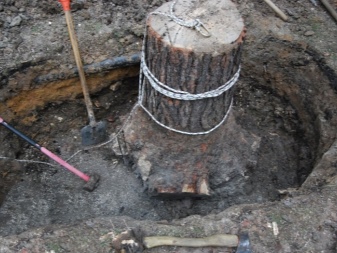
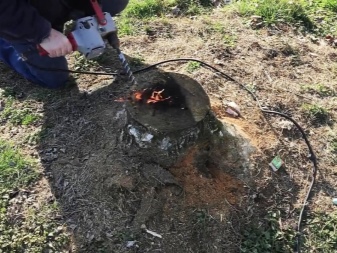
Peculiarities
The need to uproot the stump usually arises when the site is just beginning to be developed. Land allocation often involves the provision of a densely forested area. After cutting down, a large number of root cuts remain, which must be removed before cultivating the soil. If the stump is formed after cutting down dried or diseased plants, it is also important to act correctly. It is almost impossible to remove the old remnant of a saw cut from an apple or birch tree without significant effort: the root system gradually grows, clings tightly to the ground.

The process of uprooting stumps involves the obligatory removal of the underground part of the plants. In this case, the above-ground part is also destroyed. Sometimes the roots that have sprouted especially deeply are simply chopped off, leaving them in the ground for a while. Much here depends on the purpose of clearing the site.
This is not necessary for landscaping, but for construction, development of land for gardening and horticulture, it is highly desirable to extract roots.
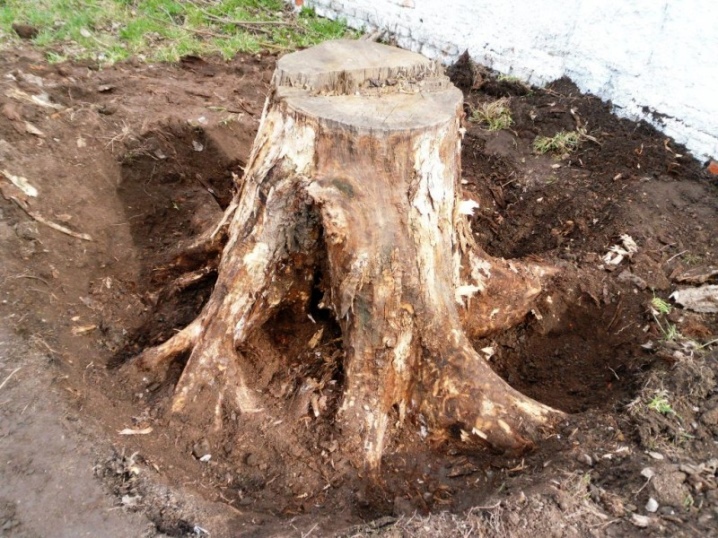
The choice of how to deal with the remains of old or felled trees depends on several factors. Let's consider the most significant ones.
- The area occupied by the root system. It is generally accepted that it corresponds to the diameter of the tree crown. This is the easiest way to assess. In addition, it is imperative to take into account the type of tree: in conifers and deciduous, root systems develop in different ways.
- The age of the tree. The larger it is, the more developed the root system will be and the more difficult it will be to cope with the uprooting process. On the stump, you can simply count the rings: their number is equal to the years the plant has lived.
- Viability. The stump, which still continues to move the juices, has lateral shoots. Such a specimen is more difficult to extract from the ground than an old and destroyed one. With rotten stumps of trunks, there may be another problem: when uprooting, the aerial part crumbles. It is easier to use an excavator here, simply by prying the roots with a bucket.
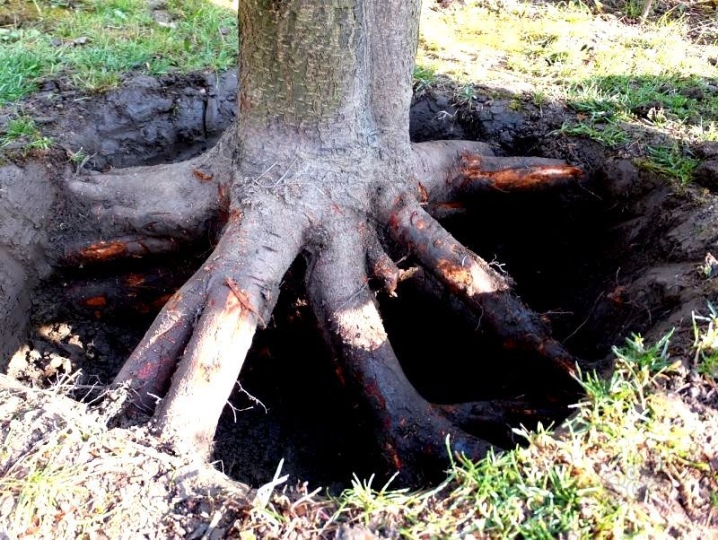
In the process of performing work, it is necessary to take into account the availability of access to the stump. If the site has already been landscaped, there are no access roads, there are no conditions for moving large-sized heavy equipment, then it is worth considering the possibility of manual lifting, using a jack or a mill-crusher. These methods do not require a significant change in the topography of the site, they can be carried out with small means and forces.
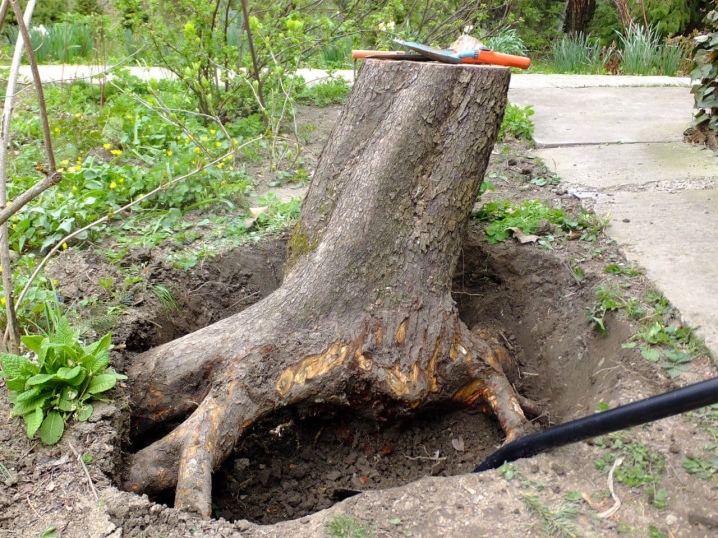
Uprooting by hand
The manual method of uprooting stumps involves the use of a person's own physical strength, as well as primitive tools: a crowbar and an ax. The process of removing the part of the tree sticking out above the ground is quite laborious. You can do the work with your own hands alone, but it is better to enlist the support of an assistant.It is also worth stocking up on shovels (shovel and bayonet), a chainsaw or a hand saw, a pickaxe and a sledgehammer. A pin made from a piece of reinforcement will also come in handy. Its length is 100-150 cm, and its diameter is 15-25 mm. The pin should have a welded round steel heel and a pointed tip.
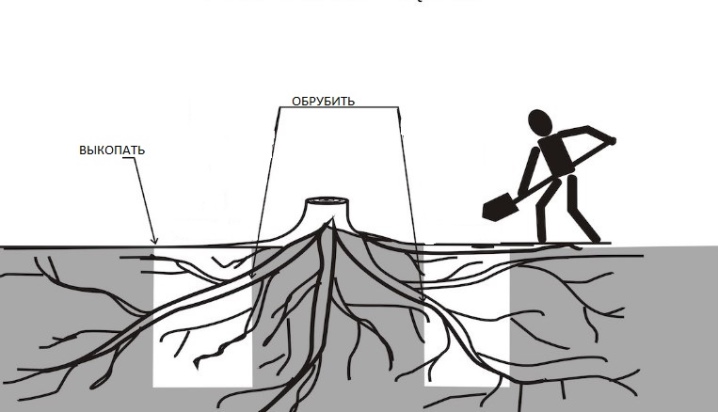
You can manually uproot stumps without roots, thick underground shoots, as well as the whole complex of elements at once. Depending on the amount of work, the procedure is also chosen. It is worth considering that in some old trees the length of the root system reaches tens of meters, so it will be difficult to do the work manually in this case.
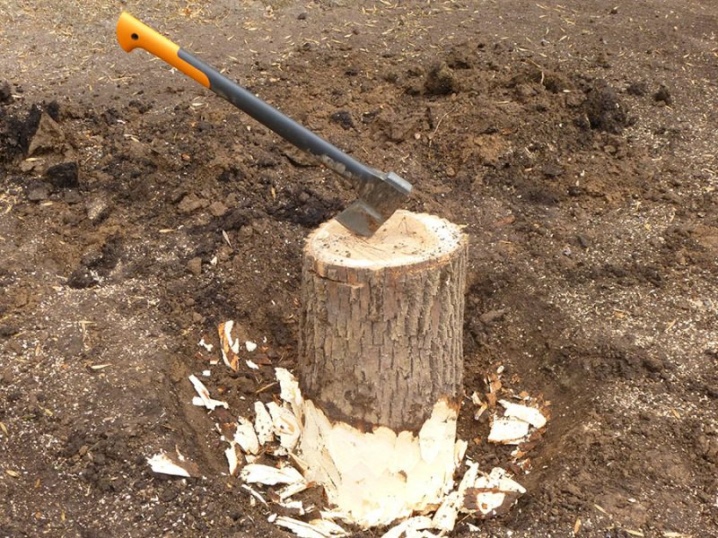
The procedure, if it is nevertheless decided to do without mechanized devices, will be as follows.
- Excavation works. A hole is dug around the trunk, a trench is dug near each side root. The diameter of the tunnel must be 10 times the size of the trunk or be at least 1 m. The soil is removed to the upper lateral roots.
- Chopping with an ax. With its help, the roots are separated immediately at the trunk, as well as at a distance from it: as far as possible. When working with the tool, it is very important to observe safety precautions, to put your feet wide and straight to avoid injury.
- Sawing. Especially thick roots cannot be cut. They are dug in so that the horizontal part of the shoots is located above the ground freely, at a distance of 5-10 cm. Then they are cut off with a chainsaw or a hand saw for wood, and removed from the ground.
- Digging up a tree stump. The hole around it should be about 5 trunk diameters deep. After that, you can shake the stump: if it moves 2-3 cm, and the side shoots are completely removed, you can chop off the main root, which runs vertically. Usually, such deepening completely solves the problem of re-germination of shoots.
- Cutting the main root. This should be done with an ax, as close to the ground as possible. The stump can be tilted slightly to the side with a crowbar to make it easier.
- Rooting up the stump. A crowbar or an armature pin is pushed under it. Using the tool as a lever, you need to turn the stump out of the ground.
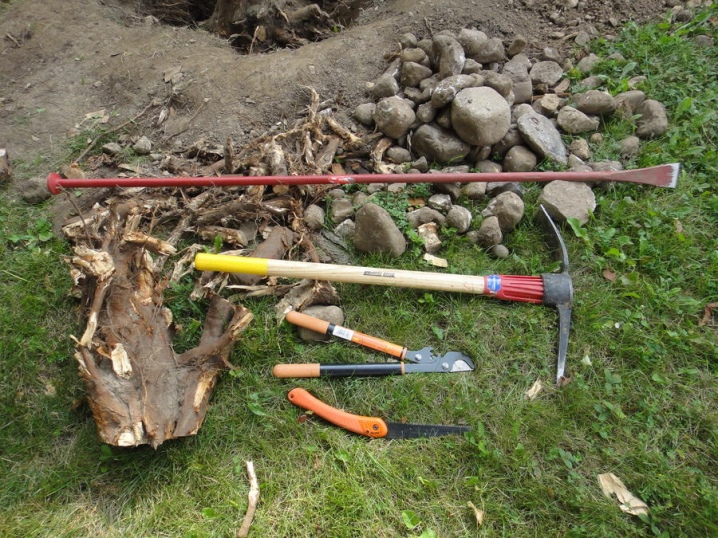
Upon completion of the work, make sure that all lateral roots have been removed. Only after that, you can bury the resulting hole, level the soil.
Removing the stump mechanically
It is not always possible to act manually. The mechanical method of uprooting is relevant both when clearing large spaces, and when freeing up a plot for construction in the country. Carrying out work with the use of special devices and tools, for example, a grubber, as well as the use of motor technology, make it easier to remove even large and old tree remains from the ground.
Special equipment
There are a number of special equipment with which you can ensure effective uprooting of stumps. Let's highlight several popular options.
- Chopper. It is a large cutter with which the stump is crushed. The size of the device does not exceed the dimensions of a garden wheelbarrow, deepening is possible by 30 cm. This allows you to grind into chips not only the surface part of the stump, but also its roots located close to the soil.
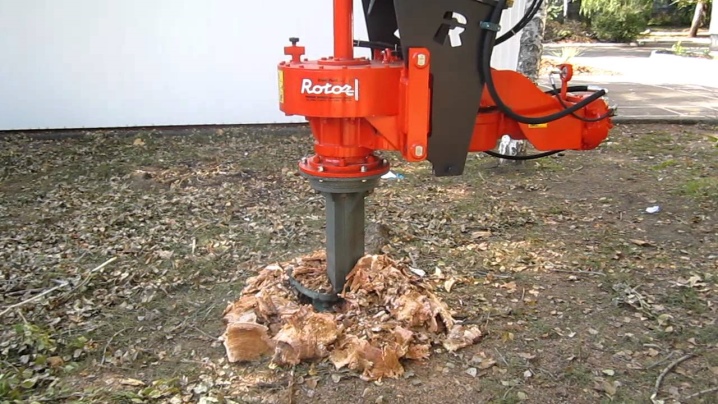
- Hydraulic linkage. It can be used as part of an excavator attachment or separately from it. The complete set of the mechanism includes a canine and a hydraulic cylinder responsible for lifting the lever. The impact force in this case is tens of tons. The diameter of the stump, which can be uprooted with such a mechanism, varies from 20 to 60 cm.

- Excavator. When using this type of technique, a preliminary digging of all available roots is carried out, if possible, they are chopped off. After that, the stump is simply pushed off with a bucket, turning upside down by the roots. With the jaw grip technique, the rest of the tree is secured from above, then it is simply pulled out of the ground using a hydraulic drive.The method is effective with a stump diameter of up to 30 cm.
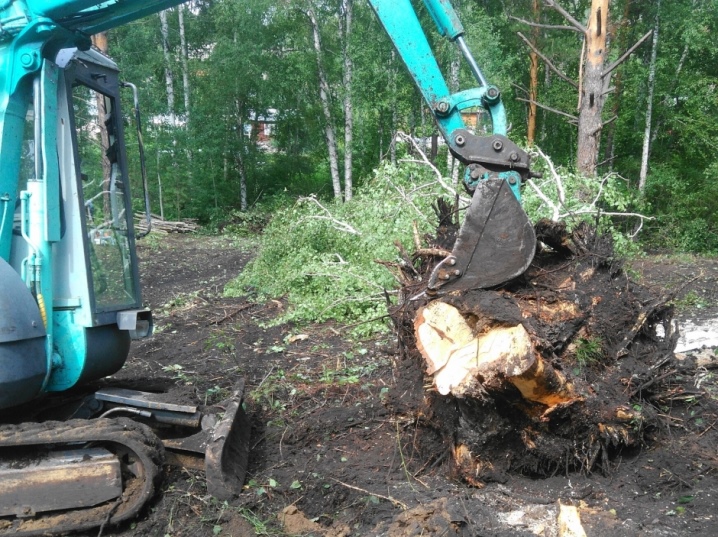
- Tractor or bulldozer. With the help of earthmoving equipment, the stump can be simply pulled out or dug out of the ground. At the same time, even large objects are easily removed, and the work is carried out as soon as possible. But difficulties may arise with the arrival of special equipment on the site, and its tracks are unlikely to benefit the lawn or other elements of the improvement. Excavators and bulldozers are used only for the development of virgin lands.
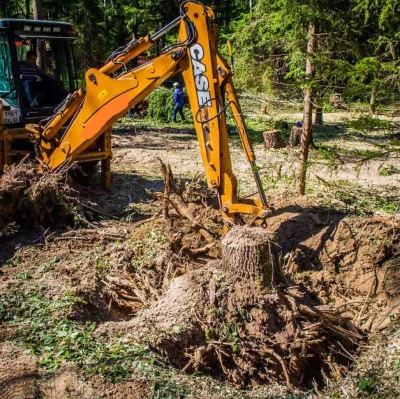
The use of special equipment makes it possible to ensure a quick and effective fight against large-sized stumps that simply cannot be removed by other methods or tools. The expediency of its use is determined individually. For the sake of removing one stump, hiring a tractor or excavator is unprofitable, but if there are many such objects, it will be possible to clear the area in just a day.
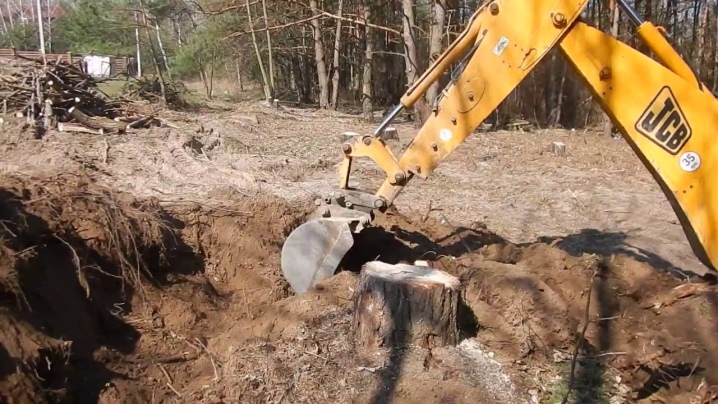
Winch
The use of a winch allows you to effectively cope with medium and large stumps that need to be uprooted. In this case, the mechanism replaces the force that occurs when exposed to a crowbar or other lever. To carry out the work, a winch with an effort of 3-6 tons is enough. Now let's look at the order of work.
- Measure a distance of 5-10 m from the stump.
- Drive the reinforcement pin into the ground, leaving an end with a heel about 10 cm high on the surface.
- Fix the winch to the metal base. Its second edge is connected to a metal hinge.
- Throw the mount over the stump. It is important that the loop fits snugly around the surface of the remaining trunk.
- Start tensioning the winch. It is important to track the position of the pin. In case of insufficient preliminary cutting of the roots, it will rise from the ground.
- Uproot the stump, digging in and undercutting the side shoots of the roots if necessary.
- Remove the pin from the ground. It is pulled out by prying it with a crowbar resting on a thick board or bricks.

If it is not possible to use reinforcement, a live tree is used in combination with a winch. In this case, it is important to fix the mechanism as close to the ground as possible, and put the loop on the top of the stump, creating additional force.
Other fixtures
In the absence of a winch or equipment, the removal of stumps can be performed with other improvised devices. For example, small-diameter tree remains can be removed from the ground with a jack. In this case, a chain is fixed on the stump, wrapped around it, fixed on a jack. Then, with the help of a lever and a stop, a gradual ascent along the rail of the main working element is carried out. In this way, you can cope with the task of clearing the site from old fruit trees.
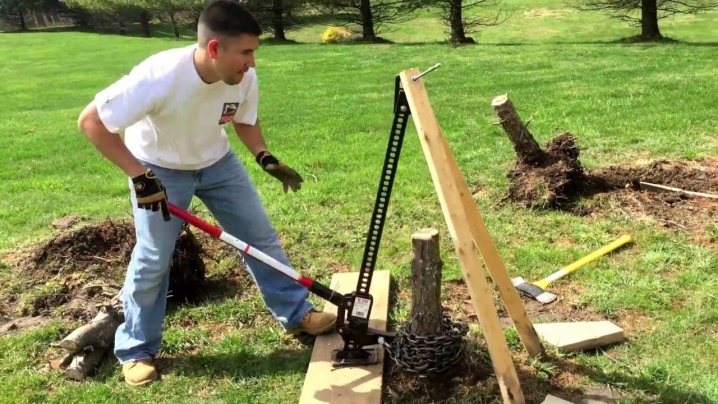
A passenger car can also easily replace special equipment. It is used as a tractor, hooked onto the end of a winch or cable, the other end of which is tied to a stump. The grubbing process consists in moving the equipment at low speed in the direction away from the remains of the tree removed from the ground. If the weight and power of the machine are proportional to the size of the stump to be uprooted, a result can be achieved quite quickly.
To increase the efficiency of the use of the traction force of the car helps:
- preliminary excavation work;
- soil erosion;
- chopping off roots.
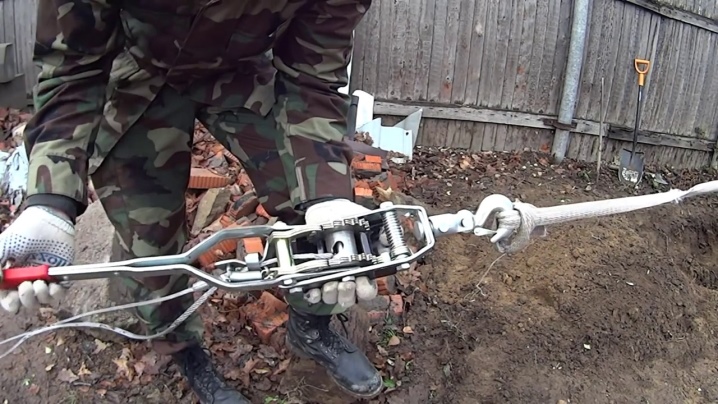
In this case, not only a heavy jeep, but also the most ordinary passenger car will be able to cope with the task. Utilities use this lifting method in combination with light trucks.

Leveling the area after uprooting
At the end of the fight against tree stumps and roots, care must be taken to ensure that the waste left after the work does not interfere with the further cultivation of the soil. It is especially important to pay attention to this if manual uprooting was carried out. In this case, significant pits and potholes, funnels are formed, requiring the delivery and dumping of soil.
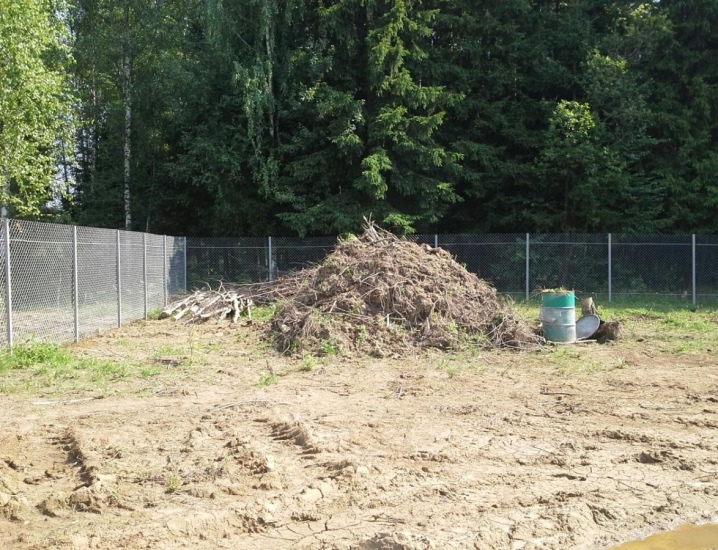
It is important to consider other factors when choosing a processing method.For example, if you plan to sow a lawn in a cleared area, you will need to backfill the soil, followed by loosening and plowing. You can perform work using a mini-tractor with a rotary tiller, a walk-behind tractor. The plowed surface is leveled with a rake.
The soil is prepared differently for construction. Since the movement of equipment will be carried out on the site, you can get by with the planning of the existing soil layer. It is carried out with a tractor bucket, allows you to make the relief relatively uniform, smooth out significant differences.
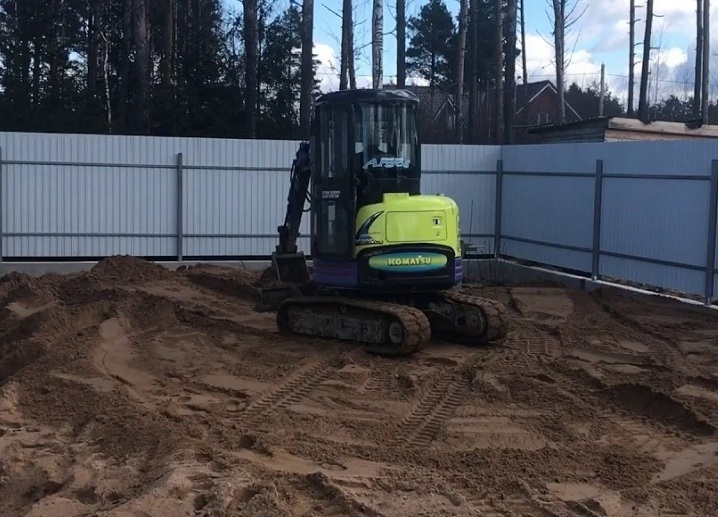
































































The comment was sent successfully.